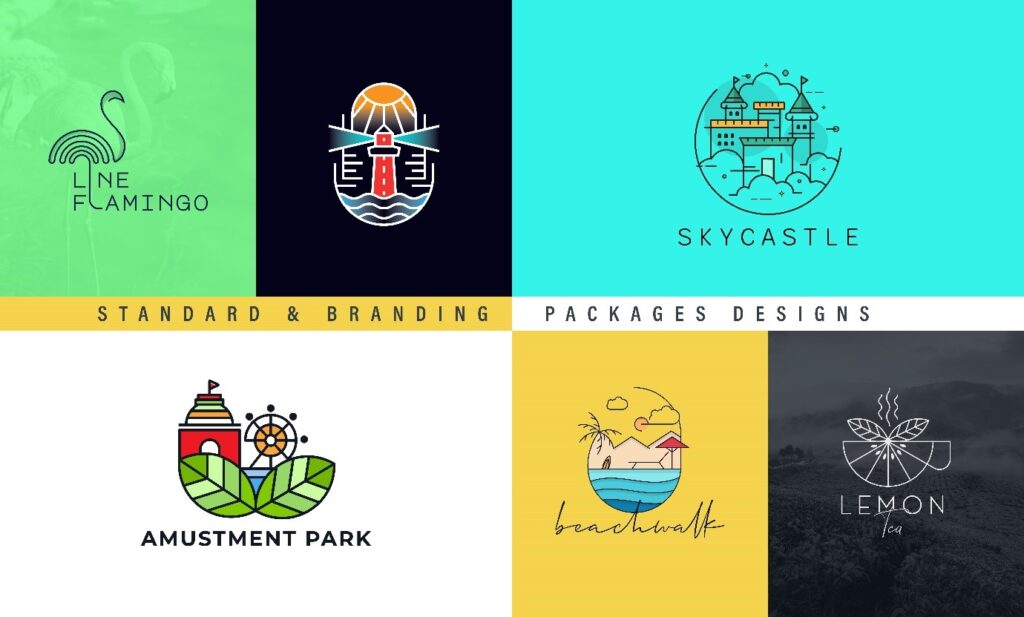Mastering the Art of Logo Design: A Comprehensive Guide

Do you need a logo for your business but are scared off by the complexity of the process? Making a logo does not have to be a difficult or time-consuming process. If you’re an experienced designer or just starting, there are a few basic steps you can take to get a Simple Logo design that effectively convey your brand’s message.
Remember that your logo’s primary purpose is visually conveying your brand’s concept. It is important that your logo not only represents your company’s name & mission but also stands out to potential customers. You can make a logo that works for your brand and speaks to your audience if you take a systematic approach while adhering to these guidelines.
It’s crucial to learn about the company or undertaking the logo is going to represent before commencing the Custom logo design process. To create an effective logo, determine your audience, your brand’s values, & the message you want to send. In order to create a logo that effectively represents your business’s values, it is essential to have a firm grasp of what that brand represents.
Table of Contents
Selecting Appropriate Fonts
Since typography may convey a brand’s message & inspire an audience’s emotional response, it is crucial to use it effectively while designing a logo. Serif, sans-serif, script, & display are only a few of the types of typography. Choosing legible, easily readable, and appropriately conveying typography that is consistent with the brand’s concept is crucial.
Using Appropriate Colors
Colors are powerful tools in professional logo and website design, evoking specific feelings and conveying specific messages. As a result, picking the proper hues for your business is essential. The brand’s intended consumers, the brand’s message, & the psychological impact of color all deserve careful consideration. For instance, the color red is associated with excitement and dedication, the color blue with trust, and the color yellow with sunshine and friendliness.
Sketching The Ideas
To produce concepts and ideas without the limitations of digital tools, sketching is a crucial part of the creative logo design procedure. The ability to concentrate on the visual elements, places, & potential difficulties allows designers to generate more ideas by sketching than they would using a computer program.
How to Select a Logo Design?
Letter marks, wordmarks, graphical marks, abstract markings, emblems, & mascots are just a few of the logotypes that companies can choose from. Choosing a modern logo design depends on the company’s beliefs and messaging, as each approach has its own set of benefits.
Developing a Better Plan
Once the designer has come up with some initial logo concepts, it’s time to narrow down the options. Selecting proper symbols that match the brand’s values is crucial since they may effectively express the brand’s message. The designer ought to think of other iterations of the logo, such as those with distinct color palettes or typefaces.
Logo Evaluation
Once you’ve created a draft of your affordable logo design, try out the way it looks in different orientations, sizes, and file types. To make sure it scales well, we need to see how it looks in monochrome, on a variety of backgrounds, & in a variety of sizes.
Testing the Logo
It’s important to get feedback from colleagues and study potential logo designs before settling on one. Make sure the brand name conveys the right impression and is true to the brand’s values.
Using Your Logo Effectively
Having settled on a final product, it’s time to roll it out across channels, including the web & print, not to mention social media. Consistently using the authorized logo is important for brand awareness.
Keeping Your Brand Consistent
It’s crucial to update the logo frequently after its initial release. Maintain brand consistency by updating and refining the logo while the brand develops. Keeping your logo consistent helps keep your brand easily recognized by consumers.
Importance of Developing a Logo
Developing a logo involves more than just coming up with an image to represent a company or product. To put it simply, the logo is the embodiment of your brand’s identity and the symbol that best represents it. It’s a potent instrument that makes an indelible impact on clients, strikes a chord with listeners, and differentiates your business from the rest.
Here, you’ll learn the ins and outs of skilled unique logo design, with an emphasis on creating emblems that strike an emotional chord with viewers. We don’t stop short of learning the fundamentals of logo design to select the optimal colors, typefaces, and forms for your brand.
Learn the Basics:
Ideally, a logo would be brief, easy to recall, and timely yet adaptable. Don’t make a bad first impression by using busy patterns, a lot of color, or lots of little details.
Establish Your Brand’s Uniqueness:
Create a mental map & do some research to identify your brand’s core values, ideal customers, and competitive advantages. Think about why your company exists and what makes it unique. Find commonalities and generate ideas for the ideal logo as a group.
Choose a Logo Format:
Pick a business logo design that fits the tone of your company and the impression you want to make on consumers. Think about incorporating elements of timelessness, novelty, and handcrafted quality into your brand’s visual identity.
Select a Logo Style:
Logotype options include monograms, words, pictures, abstractions, mascots, and combinations of these. Check that the logo’s font is appropriate for your company’s name and mission.
Font Selection:
Pick a typeface that meshes with the vibe you’re going for and the image you wish to portray for your company. Think about the font, line width, & feeling you want to convey.
If you follow these procedures and take advantage of powerful Logo branding software like Adobe & Canva, you may create a logo that accurately represents your business, impresses customers, & sets your company apart from the competition.
Conclusion
The creative and rewarding field of graphic design offers numerous work opportunities. Using one’s ingenuity, skill, and knowledge to create beautiful works that transmit meaning is essential. Many educational institutions and organizations provide training and course programs that can equip students with the knowledge and abilities necessary for a successful career in graphic design.
Graphic designers who keep up with the latest Logo redesign trends & technology and who use suitable tools and software have a better chance of creating designs that are compelling and efficient in achieving the necessary goals.




